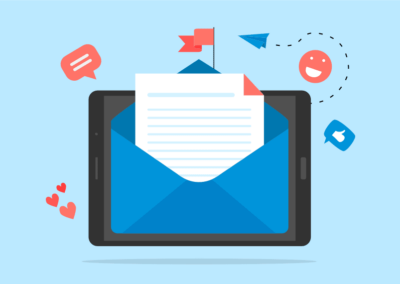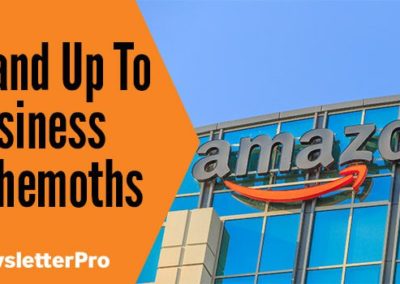Email marketing remains one of the most effective channels for reaching your audience and driving engagement. However, to truly succeed, you need to understand and monitor the right metrics. These metrics not only help you gauge the effectiveness of your campaigns but also provide insights for continuous improvement. In this article, we’ll explore the essential email marketing metrics you should be tracking.
Open Rate
The open rate is the percentage of recipients who open your email. It is one of the most basic metrics but incredibly important. A high open rate indicates that your subject lines are compelling and your audience is interested in your content.
How to Calculate Open Rate
Open Rate = (Number of Emails Opened / Number of Emails Sent) * 100
Understanding how to calculate open rate is crucial. This simple formula can provide immediate insights into the effectiveness of your email’s subject line. The more precise your count of opened emails, the better you can gauge interest and adjust your strategies.
Factors Influencing Open Rates
Several factors can influence open rates, including the timing of your email, the sender’s name, and the preheader text. The timing should align with when your audience is most likely to check their email. The sender’s name should be recognizable to the recipient to build trust. Preheader text should complement the subject line and entice the recipient to open the email.
Improving Open Rates
To improve your open rates, consider the following strategies:
- Compelling Subject Lines: Use engaging and relevant subject lines.
- Personalization: Personalize your emails by including the recipient’s name.
- Segmenting Your Audience: Send targeted emails to specific segments of your audience.
Compelling Subject Lines
Crafting compelling subject lines is an art. They should be concise, intriguing, and relevant to the recipient. Using questions, numbers, or urgency can also enhance open rates.
Personalization Techniques
Personalization goes beyond just using the recipient’s name. Consider including personalized product recommendations or content based on previous interactions. The more personalized the email, the more likely the recipient will open it.
Audience Segmentation
Segmenting your audience allows you to send more targeted emails. Segments can be based on demographics, past behaviors, or engagement levels. Tailoring your emails to each segment can significantly boost open rates.

Click-Through Rate (CTR)
The click-through rate is the percentage of recipients who clicked on one or more links in your email. This metric helps you understand how engaging your email content is.
How to Calculate CTR
CTR = (Number of Clicks / Number of Emails Delivered) * 100
Calculating the click-through rate is straightforward but essential. This formula helps you measure the effectiveness of your content and calls to action. A higher CTR indicates that your email content is compelling and relevant to your audience.
Factors Influencing CTR
Several factors can affect your CTR, including the placement and design of your call to action (CTA), the relevancy of your content, and the overall user experience. Placing your CTA in a prominent location and ensuring it stands out can drive more clicks. Content should be relevant and engaging to encourage recipients to click through.
Improving CTR
Here are some tips to improve your click-through rates:
- Clear Call to Action (CTA): Make your CTA stand out.
- Relevant Content: Ensure that your content is relevant to your audience.
- A/B Testing: Test different email elements to see what works best.
Designing Effective CTAs
Your CTA should be visually distinct and clearly instruct the recipient on what to do next. Use action-oriented language and consider using buttons instead of text links for better visibility.
Relevancy of Content
Content relevancy is key to driving engagement. Tailor your content to the interests and needs of your audience. Including dynamic content that changes based on recipient behavior can also improve CTR.
The Role of A/B Testing
A/B testing involves sending two variations of an email to different segments of your audience to see which performs better. Test different subject lines, CTAs, images, and content layouts to optimize your emails for higher engagement.
Conversion Rate
The conversion rate measures the percentage of recipients who completed a desired action, such as making a purchase or filling out a form. This metric is crucial for understanding the ROI of your email campaigns.
How to Calculate Conversion Rate
Conversion Rate = (Number of Conversions / Number of Clicks) * 100
Calculating the conversion rate helps you measure the effectiveness of your email in driving desired actions. This metric provides insights into how well your email content and CTAs convert clicks into meaningful actions.
Factors Influencing Conversion Rates
Several factors can influence conversion rates, including the clarity of your CTA, the relevance of your offer, and the landing page experience. A clear and compelling CTA can drive more conversions. Offers should be relevant and valuable to the recipient. The landing page should be optimized for a seamless user experience.
Improving Conversion Rates
To boost your conversion rates, consider:
- Targeted Offers: Provide offers that are relevant to your audience.
- Clear CTA: Ensure that your CTA leads the recipient to take the desired action.
- Follow-Up Emails: Send follow-up emails to nurture leads.
Crafting Targeted Offers
Offers should be tailored to the interests and needs of your audience. Use data and insights from previous interactions to create personalized offers. Exclusive discounts or limited-time offers can also drive higher conversions.
Ensuring Clear CTAs
Your CTA should be direct and clearly communicate the action you want the recipient to take. Use action-oriented language and make sure the CTA stands out visually. Testing different CTA variations can help identify the most effective approach.
The Power of Follow-Up Emails
Follow-up emails can nurture leads who didn’t convert initially. Provide additional information, reminders, or incentives to encourage the recipient to take action. Automated follow-up sequences can help maintain engagement and drive conversions.
Bounce Rate
The bounce rate is the percentage of emails that could not be delivered to the recipient’s inbox. There are two types of bounces: hard bounces and soft bounces. Hard bounces are permanent delivery failures, while soft bounces are temporary issues.
How to Calculate Bounce Rate
Bounce Rate = (Number of Bounced Emails / Number of Emails Sent) * 100
Understanding how to calculate bounce rate is essential for maintaining a healthy email list. This metric helps you identify and address delivery issues. A high bounce rate can indicate problems with your email list quality.
Types of Bounces
There are two main types of bounces: hard bounces and soft bounces. Hard bounces occur when an email cannot be delivered due to a permanent issue, such as an invalid email address. Soft bounces are temporary issues, such as a full inbox or server problem.
Reducing Bounce Rates
Here are some strategies to reduce your bounce rates:
- Clean Your Email List: Regularly update and clean your email list.
- Use Double Opt-In: Implement a double opt-in process to ensure valid email addresses.
- Monitor Bounce Patterns: Keep an eye on bounce patterns to identify and address issues.
Regular List Cleaning
Regularly cleaning your email list can help reduce bounce rates. Remove invalid or inactive email addresses to maintain list quality. Use email verification tools to identify and remove problematic addresses.
Implementing Double Opt-In
Double opt-in requires new subscribers to confirm their email address before being added to your list. This process ensures that the email addresses you collect are valid and reduces the likelihood of bounces. It also helps improve engagement rates.
Monitoring and Addressing Bounce Patterns
Monitoring bounce patterns can help you identify and address issues quickly. Look for trends in your bounce rates and investigate the causes. Addressing underlying issues can help improve your email deliverability and reduce bounce rates.

Unsubscribe Rate
The unsubscribe rate is the percentage of recipients who opt-out from your email list after receiving an email. While it’s natural to have some unsubscribes, a high rate can indicate issues with your email content or frequency.
How to Calculate Unsubscribe Rate
Unsubscribe Rate = (Number of Unsubscribes / Number of Emails Delivered) * 100
Calculating the unsubscribe rate helps you understand how well your content is resonating with your audience. A high unsubscribe rate can signal that your emails are not meeting your audience’s expectations. Monitoring this metric can help you make necessary adjustments.
Factors Influencing Unsubscribe Rates
Several factors can influence unsubscribe rates, including the relevance of your content, the frequency of your emails, and the overall user experience. Content should be valuable and relevant to the recipient. Avoid sending too many emails in a short period to prevent overwhelming your audience.
Reducing Unsubscribe Rates
To keep your unsubscribe rates low, consider:
- Relevant Content: Ensure your content is valuable and relevant to your audience.
- Manage Frequency: Avoid sending too many emails in a short period.
- Feedback: Offer an option for recipients to provide feedback on why they are unsubscribing.
Creating Valuable Content
Content should provide value to the recipient. Consider their interests and needs when crafting your emails. Providing valuable content can help build a loyal and engaged audience.
Managing Email Frequency
Finding the right email frequency is crucial. Sending too many emails can overwhelm your audience and lead to higher unsubscribe rates. Test different frequencies to find the optimal balance that keeps your audience engaged without overwhelming them.
Collecting Feedback
Offering an option for recipients to provide feedback can help you understand why they are unsubscribing. Use this feedback to make necessary adjustments to your content and email strategy. Listening to your audience can help improve your email campaigns and reduce unsubscribe rates.
List Growth Rate
The list growth rate measures the rate at which your email list is growing. A healthy list growth rate is essential for maintaining and expanding your reach.
How to Calculate List Growth Rate
List Growth Rate = (Number of New Subscribers – Number of Unsubscribes / Total Number of Subscribers) * 100
Calculating the list growth rate helps you understand how well your efforts to attract new subscribers are working. This metric provides insights into the effectiveness of your lead generation strategies. A healthy growth rate is essential for maintaining and expanding your audience.
Strategies for Growing Your List
Several strategies can help you grow your email list, including offering lead magnets, promoting your list on social media, and optimizing your signup forms. Lead magnets can attract new subscribers by offering valuable content or incentives. Promoting your list on social media can expand your reach. Optimized signup forms can make it easy for people to subscribe.
Improving List Growth Rate
To enhance your list growth rate:
- Lead Magnets: Offer valuable content or incentives for signing up.
- Social Media Promotion: Promote your email list on social media.
- Optimize Signup Forms: Make it easy for people to subscribe with optimized forms.
Creating Effective Lead Magnets
Lead magnets should offer value to your audience. Consider offering exclusive content, discounts, or free resources in exchange for an email subscription. High-quality lead magnets can attract more subscribers and grow your list.
Promoting on Social Media
Promote your email list on social media to reach a broader audience. Use social media ads, posts, and stories to encourage people to subscribe. Highlight the benefits of joining your email list to attract more subscribers.
Optimizing Signup Forms
Optimized signup forms should be easy to find and fill out. Keep the form fields to a minimum to reduce friction. Consider using pop-ups, slide-ins, or inline forms to capture more email addresses.
Email Sharing/Forwarding Rate
The email sharing or forwarding rate measures how often your emails are shared or forwarded. This metric indicates how valuable and engaging your content is.
How to Calculate Email Sharing/Forwarding Rate
Email Sharing Rate = (Number of Shares / Number of Emails Delivered) * 100
Calculating the email sharing rate helps you understand how often your content is being shared. This metric provides insights into the value and engagement of your content. High sharing rates can expand your reach and attract new subscribers.
Encouraging Email Sharing
To encourage email sharing:
- Shareable Content: Create content that is valuable and worth sharing.
- Social Sharing Buttons: Include social sharing buttons in your emails to make it easy for recipients to share.
- Incentives: Offer incentives, such as discounts or free resources, for sharing your emails.
Creating Shareable Content
To increase the chances of your emails being shared, create content that is valuable and worth sharing. Consider including exclusive information or promotions that will entice people to share with their networks.
Including Social Sharing Buttons
Make it easy for recipients to share your emails by including social sharing buttons. These buttons allow them to quickly post your email on their social media accounts. This can help expand your reach and attract new subscribers.
Offering Incentives
Consider offering incentives for sharing your emails, such as discounts or free resources. This can motivate people to share with their networks. Incentives can also encourage recipient loyalty and engagement. Remember to monitor and track your sharing rates to measure the effectiveness of these strategies. Overall, creating valuable content, managing email frequency, collecting feedback, promoting list growth, and encouraging email sharing are all important factors in maintaining a high-quality email list. By following these tips and continuously analyzing and adjusting your strategies, you can keep your unsubscribe rates low and grow a loyal audience for your email campaigns. Happy emailing!
Mastering Email Marketing: Build and Maintain a High-Quality List with Newsletter Pro!
In summary, maintaining a high-quality email list requires a strategic approach to content creation, frequency management, feedback collection, list growth, and email sharing. By focusing on these areas, you can keep your unsubscribe rates low and cultivate a loyal, engaged audience for your email campaigns.
If you need further assistance in optimizing your email marketing strategy, don’t hesitate to reach out to Newsletter Pro. Our team of experts is ready to help you achieve your email marketing goals. Contact us today to learn how we can support you in creating effective and engaging email campaigns.
Happy emailing!






